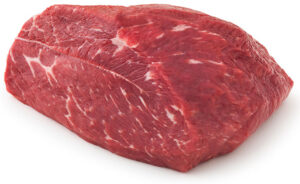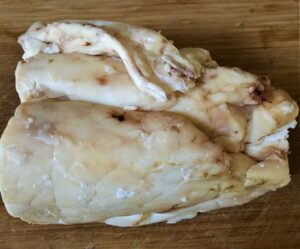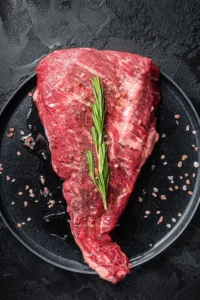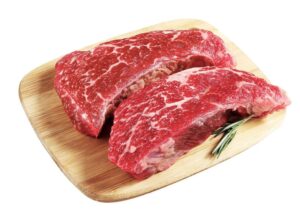A Guide To The Cuts Of Beef Part Four
- Richard Reynolds Jr.

The Purpose of the Post:
In my last blog post, ‘A Guide to the Cuts of Beef Part Three’ I discussed the differences between the ‘Skirt Steak’ and the ‘Inner Skirt Steak,’ along with highlighting the 1, 2, 3 A Cut Ribs, also known as Dyno Ribs or Brontosaurus Ribs. These ribs are best cooked low and slow using the indirect cooking method. However, I need to address a mistake from the closing statement of that post. I mentioned that ‘Rose Meat’ and the ‘Flank’ are part of the Hind Quarter, which is incorrect. In reality, ‘Rose Meat’ and ‘Flank Steak’ are sourced from the abdominal area of the cow (steer), which is part of the Front Quarter. I appreciate your understanding and strive for accuracy in all our content. Thank you. If you’d like to read ‘A Guide to the Cuts of Beef Part Three,’ you can find it here, but please keep in mind the error that was made. In this blog post, I will begin a discussion of the cuts of beef that come from the Hind Quarter of a cow (steer). It’s important to note that terminology of the cuts of beef vary between different regions and even between individual butcher shops. Some butchers may use terms that are specific to their trade or local traditions. I will do my best to keep this in mind in my writings.
Beef Suet:
Beef suet is not commonly found in grocery stores; typically, you would need to purchase it from your butcher. It’s important to understand that suet is not exclusively sourced from the hindquarter of the cow. Instead, it refers to the hard fat that surrounds the kidneys and loins, which can be found throughout various parts of the animal, including both the forequarter and hindquarter.
During the process of removing beef suet from the hindquarter, butchers and meat processors must exercise caution due to its location. In this area, suet is situated in front of the tenderloin, and care must be taken to avoid damaging this prized cut. Suet is characterized by its hard, white consistency and can vary in size depending on the size of the cow (steer). It serves as an excellent source for beef tallow, which pitmasters often use in the low and slow cooking method, particularly when wrapping briskets—a topic I’ll explore in future posts.
Apart from culinary uses, beef suet can also be utilized in soap-making and as bird feed.

The Round Tip:
The Round-Tip, also known as the Sirloin-Tip, includes the Tri-Tip Roast, which we’ll discuss later in this blog post. It’s important to note that the Round-Tip is typically removed by the butcher or meat processor using an eight-inch boning knife and a meat hook. They follow two seams down to the Sirloin, being careful not to cut into it. This cut is quite large, varying based on the size of the cow (steer).
Once the Round-Tip/Sirloin-Tip is separated, the butcher or meat processor will first isolate the Tri-Tip before proceeding to cut the Round-Tip into roasts. These roasts are usually sliced to a thickness of approximately an inch and a quarter to an inch and a half, with the aim of obtaining at least four roasts. Round-Tip roasts are often favored for making barbecue sandwiches.

The Tri-Tip:
The Tri-Tip is a triangular cut of meat, hence its name, that can be left whole or sliced into steaks. As mentioned earlier, it is located at the bottom of the Sirloin. The Tri-Tip is particularly popular in Southern California, where its unique flavor and versatility have earned it a dedicated following. If you’ve never tried Tri-Tip before, I assure you that once you do, you’ll be eager to cook it again and again.
The Tri-Tip tends to have generous marbling and fat, which contributes to its rich flavor and makes it well-suited for the low and slow indirect cooking method. Often referred to as a “poor man’s brisket,” the Tri-Tip offers a more affordable alternative with similar flavor profiles. If you plan to cook a Tri-Tip using this method, consider asking your butcher to leave a bit more fat on the cut, if it hasn’t been trimmed already.
It’s important to note that on the bottom of the Tri-Tip, there is some gristle that needs to be removed. This gristle is located at the end of the Tri-Tip, and when purchasing, always ensure that it has been properly trimmed. Additionally, remember that fat is flavor, and it plays a crucial role in keeping cuts of meat like the Tri-Tip from drying out during cooking.


In Closing:
Our journey has brought us closer to understanding the cuts of beef that come from both the forequarter and hindquarter of a cow (steer). I want to highlight that our next topic of discussion will be the Beef Sirloin. However, due to its complexity, delving into it here would make this blog post overly lengthy. Therefore, I will address the Beef Sirloin in another installment titled ‘A Guide to the Cuts of Beef Part Five.’ Additionally, we’ll continue exploring the remaining cuts of beef from the hindquarter of the cow (steer). Depending on space, we may conclude this series of posts, or we’ll continue to ensure consumers have a comprehensive understanding of beef cuts.
As always, your feedback is invaluable. Please share your thoughts by clicking the ‘Click Here to Send Us Your Comments on This Post’ link below. Thank you for reading!
